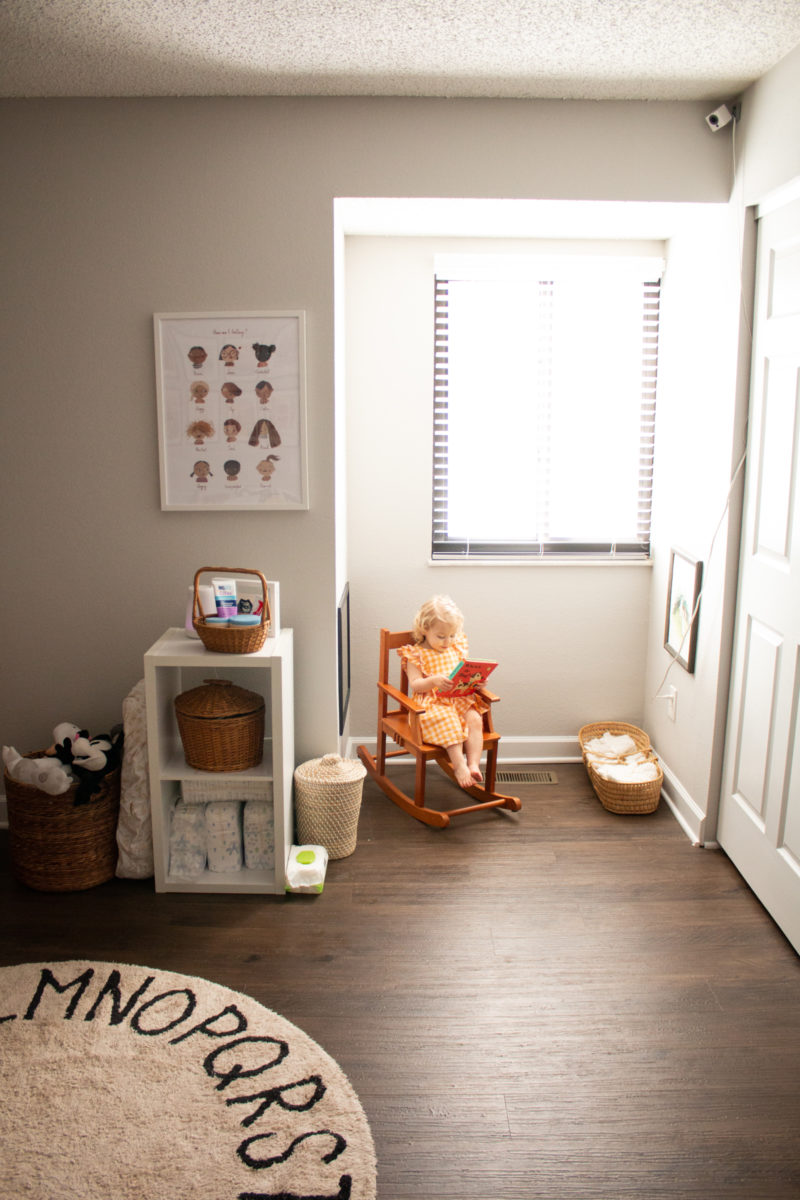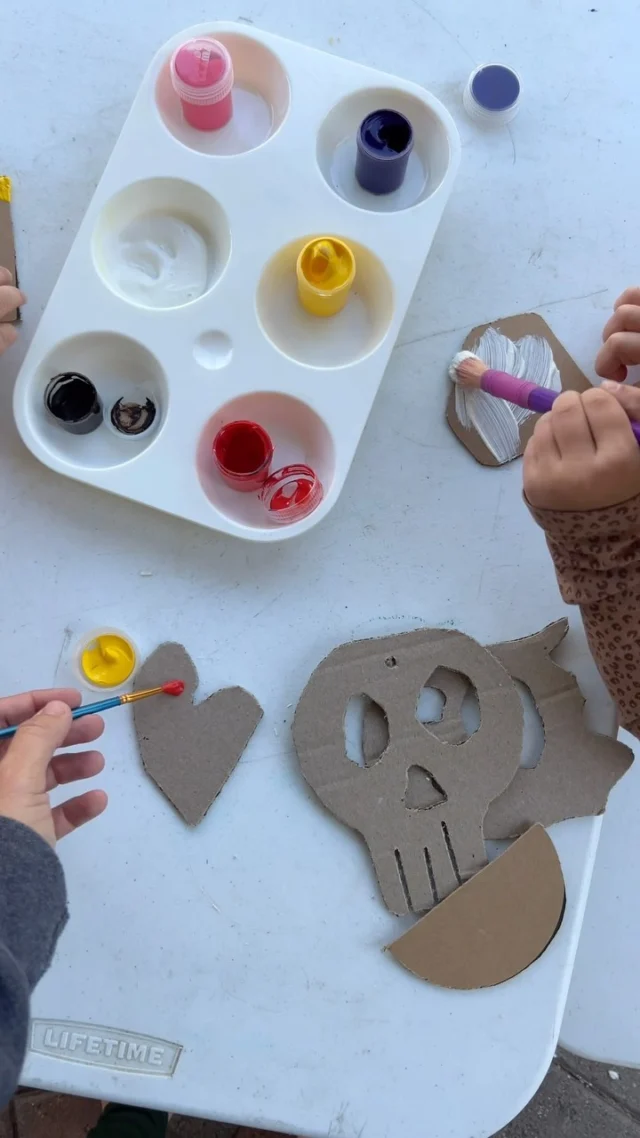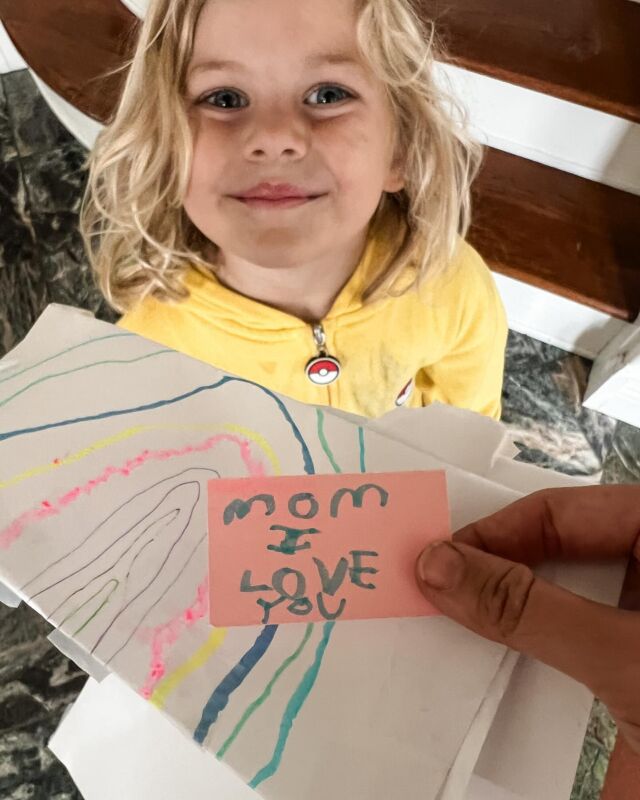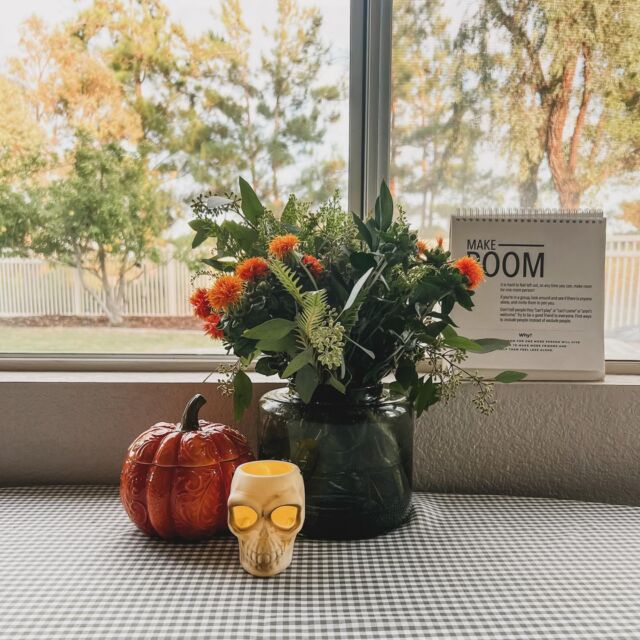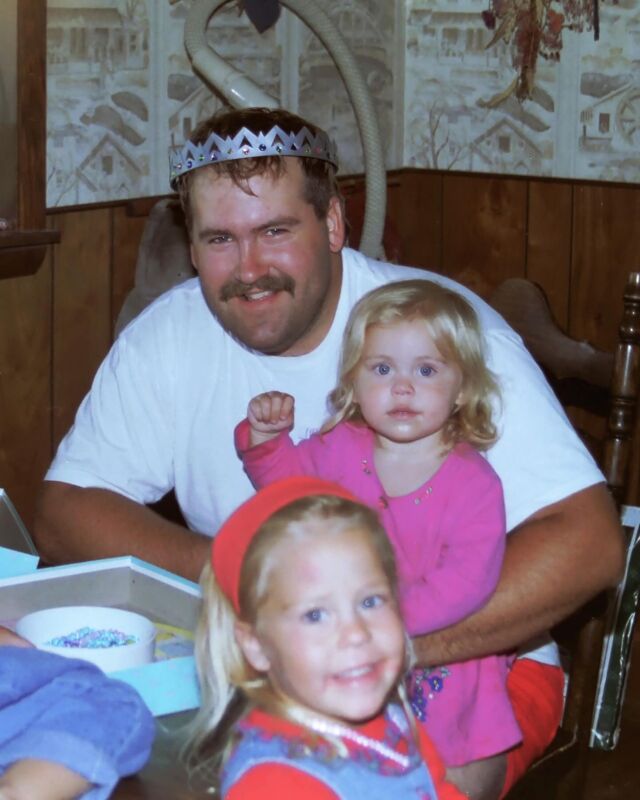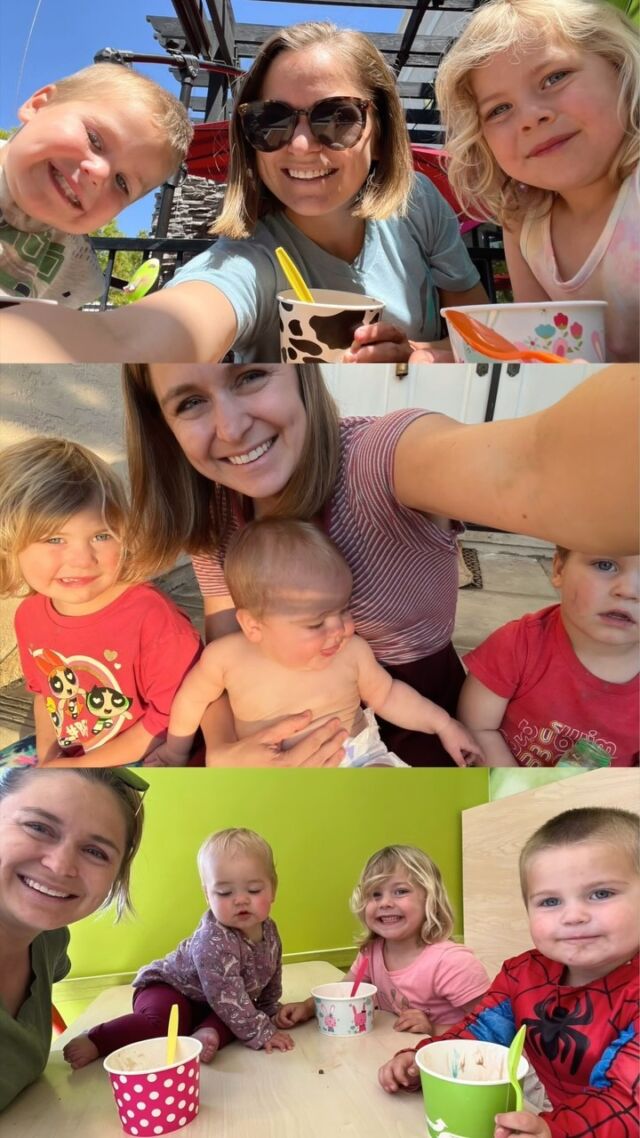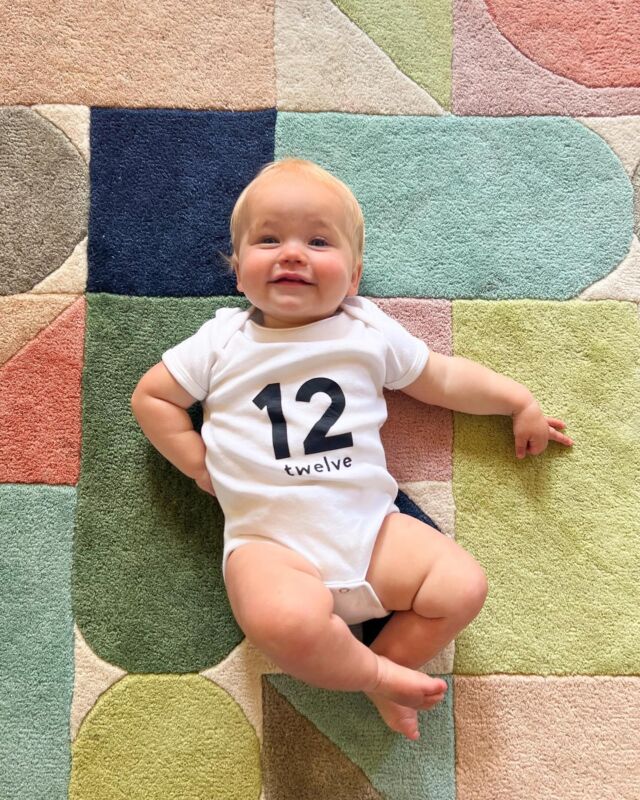I recently read the book “Talk so Little Kids Will Listen: A Survival Guide to Life with Children Ages 2-7” and really enjoyed it. I highly recommend reading it yourself since it has so many examples to use and learn from, but for those who want to hear a condensed version, these are my takeaways.
They began with an example of putting yourself in your kids shoes. They said: Imagine feeling lousy. You didn’t get enough sleep last night, and you feel a headache coming on. You begin to complain to a friend. What would your reaction be if they:
- Denied your feelings and scolded you for your lousy attitude
- Gave you advice or a philosophical lecture
- Compared you to another person
- Asked you a bunch of blamatory questions
You would think they’re a pretty crummy friend! But we do all of these things all the time to our children. We deny our kid’s feelings — “You don’t really hate school. You’ll have fun once you get there.” We try to give lectures — “Life isn’t fair! You’ve got to stop it with the complaining!” We compare them to others — “Look at how ____ is sitting quietly and waiting her turn.” And we ask them unproductive questions like “Why did you throw sand when I just told you not to?”
I love this turn-around “putting yourself in your kid’s shoes” kind of thinking. It makes me less likely to feel like my toddler is purposefully pushing my buttons and more like she is not sure how to handle her emotions and she is just looking for a friend to confide in.
Below are a few of the topics that resonated with me and things that I highlighted throughout the book.
Acknowledge Feelings
The book talks a lot about acknowledging our children’s feelings. I think there is a balance between doing it too much and not doing it enough (just like there is a balance in pretty much everything in life). But this book broke it down and gave examples of how you can acknowledge a child’s feelings in a way that works for the child or for that circumstance.
Acknowledge Feelings with Words
You can express out loud what they are feeling when they might not have the words to tell you. I have already done this with Hazel and a lot of times she immediately stops whining because now she knows I understand why she’s frustrated and whining. I think less is more so I don’t try to sound like a broken record and continually say “I know. I’m sorry. This sucks!”.
Acknowledge Feelings with Writing
Writing was another option to help express their feelings in a creative way. An example given was: “If they are about to cause a major scene in the grocery store because they aren’t allowed a certain toy, give them a piece of paper to write down a wishlist of toys.” A friend of mine takes a photo of the toy for her child for her birthday or Christmas list and that child is happy to leave it at the store (and has a photo of it to look at later if she so wishes). When Hazel gets restless in the grocery store, I started giving her my shopping list (I never follow it anyway) and my pen and she has fun “writing” on it for the rest of the trip.
Acknowledge Feelings with Art
Using art to acknowledge a child’s feelings was another option. For example, if you planned on going to an ice cream store and it was closed, you can encourage them to draw the ice cream flavor they were going to get so they can remember it next time.
Another example I thought was genius in acknowledging a child’s feelings through art was saying: “My ears are tired. Can you draw me a picture so I can see how mad you are?” We all have those moments where our ears are so tired of hearing their whining. And for some kids, drawing is a perfect way to channel their anger or other emotions. You can hang it up on the fridge with a “Thank you for showing me these mad or (fill-in-the-blank) feelings.”
Tools for Engaging Cooperation
When we want our kids to cooperate, using direct orders will almost always provoke direct opposition. And it doesn’t work to ask or threaten politely with a “please” at the end. Especially if you’re not truly willing to accept a “No thank you” as an answer (then you shouldn’t ask at all and just make a firm statement). They gave a few options to engage cooperation in young children:
Be Playful
Turn a boring task into a challenge or a game. I was the best at this as a teenager babysitter. We would turn up the music and clean up as fast as we could until the song was over. My friend makes inanimate objects come alive and talk which is memorable and fun while still giving them some type of lesson. While her son peed on the car, she opened up the gas cap and used it as the car’s mouth as if “he” was telling the boy that he didn’t like being peed on. He will probably remember that next time and there was no fight. Hazel was mesmerized by it. Since then I have used objects or her favorite stuffed dog talk to her about going pee on the potty or other tasks she doesn’t want to do.
Offer a choice
I am not sure if I’m 100% on board of offering choices for every single minimal thing but I like her suggestion during “mayhem at the market” to give your child one free choice out of the whole produce section. I usually give 1 or 2 items to Hazel to hold during our grocery store trips and she loves helping me get all the items on the conveyer belt.
Put the child in charge
Kids are just itching for responsibility. They have that innate desire to contribute and help so young so foster that and give your kid jobs. As early as possible, have them put the clean dishes away, look for certain items, write the list beforehand, hand you items as you scan food at the store, etc. It can be tiring (and messy) and slow but so worth it when there are no, or little, tantrums in sight! Hazel has recently been very eager to grab a diaper and wipes every time James needs a change.
Give information
Another way to help kids cooperate is to give them information. Letting them know the facts (while also not talking too much and lecturing) will help them practice their executive function skills.
Try Problem-Solving
Having your child problem-solve with you is all about collaborating, working together, and asking for ideas. This one is for older toddlers who are more developed, aka Hazel at 2.5 isn’t quite there yet. When having bedtime protests, they suggest to ask (not during bedtime but a quiet moment during the day) : “What helps put you in a sleepy mood?” The child may give an idea you would have never thought of, and they’ll be more willing to cooperate if it is their own idea!
“Kids can’t act right when they don’t feel right”
The section from this quote was a great reminder that food, sleep, and recovery time is a biological need. Give them time to recover from the physical changes of anger, fear, and frustration. And give yourself recovery time too.
Cooperation in Clean up
This is one of those parenting things you dread: getting your kid to clean up their room. There are dozens of ways to approach this (like being more minimal and getting rid of clutter!) but this book had some tips if your kids are pushing back at you. You can use any of these tactics: Being playful, offering a choice, writing a note, describing what you see, giving information, saying it with one word, describing the progress, describing what you see with appreciation.
- Offer a Choice: at the same time make the task feel less overwhelming. “Should we start with the cars or crayons?”
- Be playful: Make block’s bag talk: “Feed me blocks!” Or Make it a game, set the timer and go fast!
- Issue a challenge: “I bet you can’t get all the legos back in the bag before I empty the dishwasher!”
- Counting: 5 things of garbage before leaving room
- Write a note on the front door as a reminder: Jackets away before play
- Describe what you see with appreciation: “Wow, look at this big cleanup you did. You guys are quite the team.”
- Point out progress instead of criticizing an incomplete job, “I see you’ve tossed all the dirty laundry in the basket. Now all that’s left to make it spectacular is to pick up the books and blocks.”
- When coming into an unpleasant dirty surprise, stick to describing what you see and giving information in a calm manner
The main point is to keep the interaction and relationship pleasant. What is important at this stage is developing a positive feeling about being helpful and working together.
Medicine, Shots, Blood Draws, and other Horrors
Another section of the book handles the events that can be scary for a young child.
- Acknowledge feelings: “Yes, it can be scary”
- Giving in fantasy: This helps put them in the mood to work with you. “I wish they could put medicine inside a lollipop. You’d eat one a day for a week and then you’d never get sick.” Drink antibiotic: “Yuck, this medicine is really disgusting to you. Why can’t they make it taste like pizza? The doctors should have to taste it too before they give it to the kids.”
- Give Information: “The shots put tiny little fighters in your blood, called antibodies. They fight against tiny germs so you don’t get sick. The good thing is shots are quick. They’re over in the time it takes to clap twice. Like this!”
- Offer a Choice: “Do you want me to clap for you, or your brother? I know if you did it for yourself the nurse probably wouldn’t be too happy. It would be hard to give a shot to a clapping kid.”
- Problem-solve: “Would it help to look forward to something after the shot is over?” Ex: Decide to buy a post-shot treat of M&M’s. When helping your child drink medicine: “Ugh this is a really difficult situation. How can we get this disgusting medicine inside your body in the least disgusting way possible? We need ideas!”
- Be Playful: When getting your child to drink those horrible tasting medicines, turn it into magic medicine. “I can see it inside your body down your throat. Your chest. Your stomach. Now it’s down to your knees! I wonder if you can get it all the way down to your toes.”
- And if all else fails, Taking action without insult: You can restrain her with understanding and sympathy.
Each kid is different. Sometimes it helps to put the child in the driver’s seat and let him control the action. Other times it’s best to take action – take the child out of the driver’s seat and not burden him with that responsibility. Each kid will be different so you know your child best!
Shyness
I enjoyed the section about shyness. The phrase, “____ will join you when he’s ready” is one I will use when mine or another child is acting shy. This phrase tells a child that you respect his feelings and his need to go slowly. He is in charge, he’s not going to be pushed. More importantly, you’re not keeping him stuck in a role: “Mom said I’m shy. I must be shy. I’d better stay behind her legs where it’s safe.“
Hitting, Pinching, Poking, Punching, Pushing – I Barely Touched Him!
The ultimate goal is for an older sibling who feels more tolerant of his little sister, not more resentful. And a child who has options other than violence to protect himself in the future. We need alternatives to the phrases “bad girl” or “how could you hurt the baby like that?” or “Don’t be mean!” We need words that state your values without attacking the child or labeling them.
- “Sisters are not for pushing!”
- Attend to victim: “Let me kiss that bump to make it feel better. Should we put ice on it?”
- Help him make amends: “She needs something to make her feel better. Can you bring her the teddy bear? Thank you, ___!”
- Problem-solving: Maybe you can try roaring into a pillow instead of using your fists.
- Give information: “I think you didn’t want to hurt her, you just wanted to keep her away. You didn’t mean for her to fall on her head. That was not the plan! It must have been scary when she started crying and I started yelling. You didn’t want that to happen.”
- Acknowledge feelings: “Wow! You seem really angry right now!”
I really like the example above about the younger sibling getting hurt after a push and explaining to them: “That was not the plan, you didn’t mean for her to fall on her head.” Another example they gave, instead of accusing and interrogating, is tostate the obvious. “I see you ate the cake.” If she protests or acts out, accept the feeling behind the protest. “It’s not easy to resist chocolate cake when it’s sitting right in front of you. I bet you are feeling like you wish you hadn’t eaten it!” Put yourself in her shoes and realize she is learning how to resist urges and discipline herself, just like we still are as adults.
I really liked this book and this is only a quick skim of my favorite topics in it. I hope these little bits are helpful for you as you get into the stage of little children and helping them regulate their feelings!


